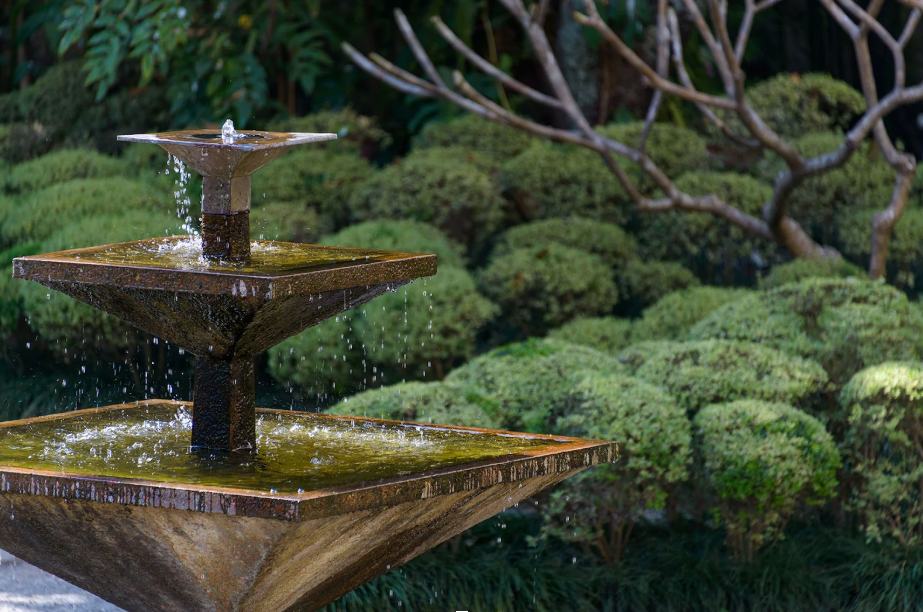
Is Your Fountain Ready for Spring? Essential Water Fountain Maintenance and Cleaning Tips
When the cold months are finally over and the first warm breezes of spring arrive, it is the perfect time to get your outdoor water fountain back into shape.
A well-maintained fountain not only enhances the beauty of your space but also ensures smooth operation and longevity.
Whether you own a small tabletop fountain, a garden centerpiece, or an elaborate cascading feature, spring maintenance is crucial to keeping it looking and functioning at its best.
After months of dormancy, your fountain may have accumulated debris, mineral deposits, or algae growth. Pumps and filters may also need attention before you can enjoy the soothing sound of running water again.
Why Spring Fountain Maintenance Matters
Fountains work best when they are kept clean and in good condition. Neglecting spring maintenance can lead to several issues, such as clogged pumps, poor water quality, unpleasant odors, and even damage to the structure of the fountain itself. Addressing these problems before they escalate saves time, money, and frustration.
Spring cleaning is also the ideal opportunity to inspect your fountain for any wear or damage caused by winter weather. Freezing temperatures, snow, and ice can cause cracks or stress in certain materials. By catching these problems early, you can repair them before they worsen.
Step-by-Step Spring Fountain Cleaning Process
The following steps will help you thoroughly clean and prepare your fountain for springtime enjoyment.
1. Drain the Fountain Completely
Before you can clean your fountain, you need to remove all the water. Use a small bucket or pump to drain it completely. This allows you to access every surface for thorough cleaning.
2. Remove Loose Debris
Leaves, twigs, and dirt often accumulate over the winter. Use a soft brush or your hands to remove any large debris from the basin and surrounding areas.
3. Clean the Surfaces
Mix a gentle cleaning solution of mild soap and warm water. Avoid harsh chemicals that could damage the material or harm wildlife. Using a non-abrasive sponge or cloth, scrub the surfaces of the fountain to remove algae, mineral deposits, and dirt.
For stubborn stains, a vinegar and water solution can work wonders, especially for calcium deposits. Be sure to rinse thoroughly to avoid leaving any cleaning residue.
4. Inspect and Clean the Pump
The pump is the heart of your fountain, and it needs special care. Disassemble the pump according to the manufacturer’s instructions and clean each part. Remove any buildup that could impede water flow. If your pump uses pond filters, check and clean or replace them as needed.
5. Check for Damage
Examine the fountain structure for cracks, chips, or other signs of wear. Look for any parts that may need sealing or replacement. Addressing small problems now prevents costly repairs later.
6. Refill and Test
Once everything is clean and in good condition, refill the fountain with fresh water. Turn on the pump and check that the water is flowing smoothly and quietly.
See also: Mercy Home Services: Comprehensive Home and Community Based Services
Preventing Algae Growth
One of the most common maintenance challenges for fountains is algae buildup. Warm weather and sunlight create the perfect environment for algae to thrive, but with a few preventive measures, you can keep it under control:
- Position your fountain in partial shade to limit direct sunlight.
- Clean it regularly to remove debris that could feed algae growth.
- Use a safe algaecide designed for fountains, especially if it is an outdoor installation.
- Keep the water moving with a reliable pump to discourage stagnation.
Seasonal Care for Different Fountain Types
Different fountains have unique maintenance needs, depending on their size, style, and location.
Tabletop and Indoor Fountains
Indoor fountains generally require less maintenance, but it is still important to keep them clean to prevent mineral buildup. Use distilled water to reduce the risk of deposits, and clean the pump every few weeks.
Garden and Outdoor Fountains
Outdoor fountains are exposed to the elements, so they require more frequent cleaning and inspections. After winter, always check for cracks or weather damage, and ensure the pump is functioning properly before adding decorative elements like stones or plants.
Bird Bath Fountains
If you have a bird bath fountain, cleaning is especially important to keep the water safe for visiting birds. Change the water frequently, and avoid using chemicals that could harm wildlife.
Eco-Friendly and Solar Fountain Care
Solar fountains are becoming increasingly popular due to their energy efficiency and ease of installation. If you have a solar powered water fountain, make sure the solar panel is clean and free from debris so it can operate efficiently.
Other solar-powered designs, such as solar fountains or a solar powered pond fountain, need the same seasonal cleaning but also benefit from positioning where they can receive ample sunlight.
For wildlife lovers, a solar bird bath fountain or solar fountain bird bath combines the charm of a water feature with a functional water source for birds. A solar powered bird bath fountain can be a perfect low-maintenance addition to your garden.
Pump Maintenance and Upgrades
Your pump plays a crucial role in maintaining water circulation. Over time, pumps can lose efficiency or become clogged. If you have a fountain with a waterfall feature, investing in a high-quality waterfall pump can improve water flow and enhance the visual and auditory appeal of your fountain.
Always follow the manufacturer’s recommendations for cleaning and replacing pump parts. Lubricate moving components if necessary, and store the pump indoors during freezing months to extend its lifespan.
How Often to Clean Your Fountain
While a deep clean at the start of spring is essential, you should also maintain your fountain regularly throughout the season:
- Weekly – Remove debris and check water levels.
- Monthly – Clean the pump and wipe down surfaces.
- Seasonally – Perform a deep clean and inspection, including any repairs or upgrades.
By following this schedule, you can enjoy a clear, sparkling fountain all year long.
Troubleshooting Common Fountain Problems
Even with regular maintenance, fountains can occasionally develop issues. Here are some common problems and their solutions:
- Low Water Flow – Check for blockages in the pump or tubing.
- Pump Noise – The pump may be clogged or running dry; check water levels and clean the pump.
- Green Water – This is usually caused by algae; clean the fountain and use preventive measures.
- Leaks – Inspect for cracks or loose fittings and seal them as needed.
Decorative and Functional Enhancements
Spring is also a great time to refresh the look of your fountain. Consider adding decorative stones, aquatic plants, or lighting to enhance its appeal. If your fountain is part of a pond feature, adding plants can also help with natural filtration and water quality.
Safety Considerations
When working with your fountain, especially during maintenance, keep safety in mind:
- Always disconnect electrical pumps before cleaning.
- Avoid standing water for long periods to prevent mosquito breeding.
- Use safe, wildlife-friendly cleaning products if birds or pets use the fountain.
Final Thoughts
Preparing your fountain for spring ensures that it runs smoothly, looks beautiful, and remains a source of relaxation and enjoyment. By following a thorough cleaning routine, inspecting your pump and filters, and addressing any damage early, you can keep your water feature in top condition throughout the warm months.
Whether your fountain is powered by electricity or solar energy, large or small, decorative or functional, spring maintenance is the key to long-term performance. With these tips, you will be ready to enjoy the gentle sound of flowing water as soon as the first flowers bloom.




